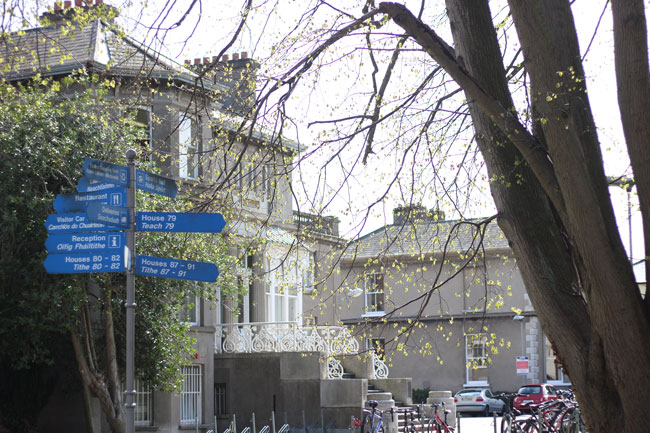Plans to demolish and rebuild Cunningham House and develop new accommodation in Trinity Hall has reached a new stage, with a business case currently being worked on, figuring out how much it will cost to demolish a house and how much it will cost to rebuild the house with appropriate amenities. This project has made slow progress over the last few years.
Following deprioritisation last year, the plan to demolish and rebuild Cunningham House has been given the go-ahead to enter the next phase of its development. The decision comes as the accommodation situation in Dublin shows little sign of relenting.
The project at Trinity Hall will see Cunningham House, which was built in the 1970s, replaced with a more modern accommodation complex. It is expected that the redevelopment will deliver up to 400 much-needed beds, with original projections indicating that those would have been available some time in early 2020.
Speaking to the The University Times, Dean of Students Kevin O’Kelly confirmed that the project had “secured some initial funding”, which would allow them to begin the tendering process to appoint a design team. Pre-construction surveys of the site, such as topographical studies of the land, will also happen. The University Times reported in December 2016 that the project had been deprioritised. Speaking at the time, O’Kelly described the sidelining of the project as “a huge disappointment”.
Following the surveying process, it is hoped that a design team can be appointed, whose fee will then have to be approved by the College Finance Committee before any further work can go ahead. The approximate date for the appointment of a team is January 2018, in line with strictly regulated public procurement practices. This new development, however, is a clear commitment from College regarding the project. O’Kelly explained that “the bottom line is that Trinity has committed to the project, as long as it’s financially viable, so it’s on track”.
Despite this commitment, there is still some way to go. Even after the design team is appointed, there is the question of awaiting planning permission. “We would wait for that process to finish”, said O’Kelly, before moving to put the project out to tender once more with construction contractors.
There is also the question of what will happen to the old Cunningham House, which “has kind of reached [the] end of life”, according to O’Kelly. Demolition is an option, though there are a number of important trees in the area that are under the College’s trusteeship, and so the project is in consultation to ensure best practice is followed with regard to conservation.
Built in the early 1970s, Cunningham House was seen as a massive modernisation of Trinity Hall, which, at that time, only consisted of Oldham House. It currently provides 68 beds for residents of Trinity Hall. Its high maintenance costs and old-style dorms have often been highlighted as major problems. As well as providing accommodation to students, the development could also see additional amenities for students, such as more open spaces and sports facilities, being built.
The project forms part of College’s ongoing efforts to provide accommodation for students in the midst of a national accommodation crisis. The Oisín House accommodation project, which received verbal approval from Dublin City Council in December following the rejection by An Bord Pleanála of the initial plans in July, will provide 250 beds for students and will see a new health and disability centre, sports facilities and two retail units on the property. In October, it was announced that Trinity had leased 248 beds from the Binary Hub, located in the Liberties, in an effort to provide more student accommodation.
Speaking to the The University Times in December, Provost Patrick Prendergast said that College has been “bursting a gut to get more student residences. We’ve looked at, I’d say, 10 different sites around the city in the last two years. It’s really made me angry that we haven’t been able to do a deal on any of these”.







